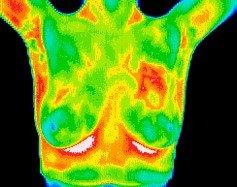


Wellness education and resources for women of all ages provided by specialized local wellness professionals.

The fight against breast cancer seems to have been going on for generations without much success. Even with increased awareness about preventative measures and improved technology, tens of thousands of women die from the disease each year. These statistics are frightening when you think of the effort behind trying to fight breast cancer. There must be more that we can do to bring the number of breast cancer deaths down.
Experts agree that prevention is most important and most effective way to combat breast cancer. Educating the public on preventative behaviors, including proper nutrition, exercise, sleep, managing stress would eliminate some of the new breast cancer cases each year. New findings show vitamin D also plays a role in prevention, as well as consuming turmeric, which can cut risk in half.
The most common preventative measure that women are told to take, each year after the age of 40, are screening mammograms. There is some discussion among the medical community, however, on how effective yearly mammograms are in the prevention of the disease. There is even talk of mammograms increasing the risk of breast cancer in some patients.
Traditional Mammograms introduce radiation to breast tissue and this may increase risk of breast cancer in certain women. The increased radiation has been known to affect the breast tissue in women whose first mammogram is before the age of thirty and have BRCA 1 or BRCA 2 gene mutation.
Mammograms also have proven to produce false results, negative and positive, approximately 80 percent of the time. This causes the unnecessary use of invasive procedures that carry their own risks of infection, as well as the unnecessary use of chemotherapy.
Another negative effect of the mammograms is the way they are performed. The compression of the breast during a mammogram can damage breast tissue and potentially spread cancer cells, if present.
Many women are turning to MRIs after a suspicious mammogram result. MRIs are not practical because they are not specific and can be costly. Ultrasound is also an option for women who need to take a closer look at something that showed up in a mammogram, however ultrasound only detects solid masses. This may increase the patient's risk for missing a potentially dangerous cyst.
An alternative that is not commonly known about is Thermography. It is considered an alternative medicine, so conventional physicians often do not even mention this type of screening and it is not usually covered by insurance.
Thermography is the safest way to look at breast tissue. The process uses no mechanical pressure, no radiation, and it can detect signs of breast cancer earlier than mammogram or physical exam.
The thermograph method of screening breasts simply measures the infrared heat from the breast tissue. An unusual pattern of heat detected can indicate a possible issue that may need to be monitored and evaluated. This may be an indication of the possible early stages of cancer cells, found before it would be detected by a mammogram. In some cases, the beginning stages of cancer formation may be detected up to 10 years earlier than with a mammogram.
The thermography screening is not costly, involves no pain, and is non-invasive. It is a good way to get the satisfaction of knowing what is going on inside your breast without subjecting it to radiation and extreme pressure. This is a test that women with high cancer risk or low cancer risk can take and receive peace of mind knowing they are taking an extra step to protect themselves from possible misdiagnosis and late diagnosis of breast cancer.
For more information on thermography, contact Thermography of Brevard.
Resources:
